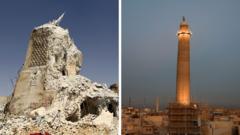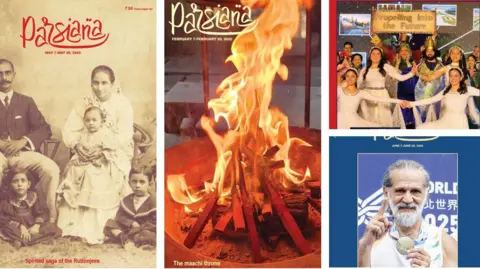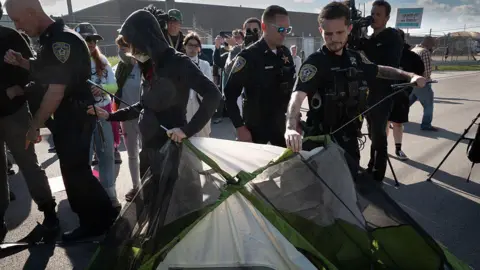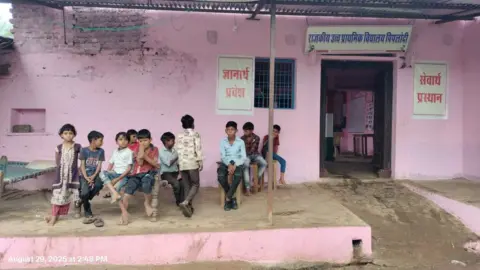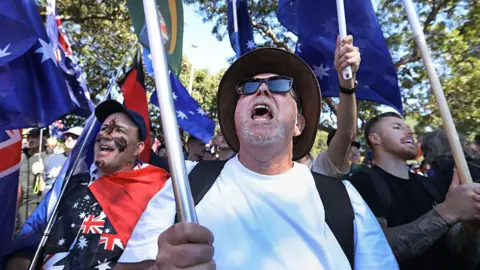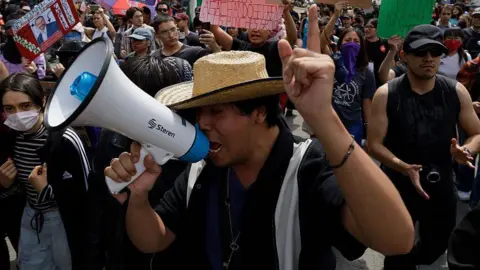In a remarkable revival, the historic city of Mosul, once held captive by the extremist group Islamic State (IS), is witnessing a reinvention of its cultural and community heritage. Following years of destruction and turmoil, the reopening of cherished landmarks, including churches and mosques, is a significant milestone in an ongoing restoration initiative spearheaded by UNESCO. This project began in light of IS's defeat in 2017, positioning restoration as a symbol of resilience and hope for the community.
On Wednesday, UNESCO's director-general Audrey Azoulay and Iraqi Prime Minister Mohammed Shia' al-Sudani will grace a ceremony that celebrates the reopening of these iconic sites. The event will be attended by local artisans, residents, and diverse religious representatives, signifying a collective commitment to healing the city that for centuries epitomized coexistence among various faiths and ethnic groups.
IS’s violent occupation of Mosul from 2014 until its liberation in 2017 devastated the city's cultural fabric, as the group targeted minorities and sought to erase its rich history. The aftermath left Mosul in ruins. Photographer Ali al-Baroodi recollects the haunting imagery that met him after the conflict—broken structures, a lifeless skyline devoid of the famed leaning al-Hadba minaret, and an overwhelming sense of loss. He recalls the minaret, a centuries-old symbol of Mosul, reduced to destruction.
Despite the grim reality of having lost significantly—80 percent of the Old City succumbed to ruin during IS's three-year reign—efforts to recover have accelerated under the guidance of UNESCO, with a restoration budget of $115 million sourced from both international partners including the United Arab Emirates and the European Union.
The restoration initiative has involved diverse community participation. Father Olivier Poquillon, overseeing the restoration of the revered Notre-Dame de l'Heure convent, emphasizes that rebuilding relationships within the community was essential alongside physical reconstruction. His efforts brought Christians and Muslims together for the first time since the ordeal, focusing on nurturing trust and mutual respect.
Chief architect Maria Rita Acetoso affirms that this revival not only restores structures, but also facilitates job creation and skills development. The initiative has given over 1,300 local youth training in traditional skills, and has successfully generated around 6,000 new employment opportunities. More than 100 classrooms have been refurbished to nurture education and growth.
As tangible signs of progress emerge, including the tuning bells of al-Tahera Church and the reconstructions of significant monuments like the al-Hadba minaret and the al-Nuri mosque, the people’s connection to the past is being rekindled. Residents like Mustafa and Abdullah, who returned to their family homes, share a profound sense of joy and renewal in witnessing the restoration of their cherished legacy amid historical ruins.
Although the scars of conflict remain, Mosul's slow but assertive transition from lessons of war to symbols of hope illuminates a path for a brighter future. As Ali al-Baroodi continues to document the city's resurgence, he poignantly notes, “It’s truly like seeing a dead person coming back to life,” encapsulating the city’s enduring spirit.
In Mosul, where destruction once reigned, a collective commitment to restoration is paving the way for healing, unity, and a shared cultural renaissance.

